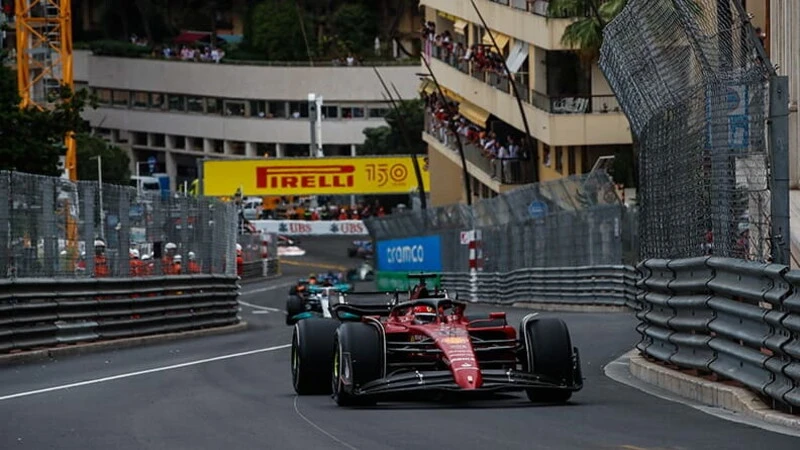Speed, accuracy, and cutting-edge technology are all combined in the Formula 1 globe to create the finest racing experience. This comprehensive analysis examines the most current breakthroughs and advancements shaping Formula 1’s future.
We cordially invite you to join us on this exciting journey as we explore the advancements in engineering, aerodynamics, safety, and sustainability that are elevating the sport.
Evolution of Formula 1 Car
Lightweight Chassis: Redefining Performance
Engineers have relentlessly pursued perfection as new life Formula 1 cars have evolved, pushing the limits of lightweight design. Formula 1 teams have been able to attain unparalleled strength and rigidity while drastically decreasing the weight of the chassis by utilising cutting-edge materials like carbon fibre composites. This weight loss improves overall performance, allowing the automobiles to accelerate more quickly, turn with more accuracy, and reach higher top speeds.
Aerodynamics: Mastering the Art of Downforce
In Formula 1, aerodynamics is crucial because teams want to maximise downforce while minimising drag. Engineers have created complex aerodynamic elements like front wings, rear wings, and diffusers through intensive wind tunnel testing, computational fluid dynamics simulations, and painstaking design refinements. These elements work together to generate immense downforce, allowing the cars to maintain exceptional grip and stability, even at high speeds and through challenging corners.
Power Units: Combining Performance and Efficiency
The introduction of hybrid power units in new life Formula 1 has revolutionized the way teams harness the power and optimize efficiency. These power units consist of a highly efficient internal combustion engine paired with advanced electric motor technology.
The seamless integration of these components allows for instant power delivery, enhanced acceleration, and improved fuel efficiency. Formula 1 cars equipped with hybrid power units showcase the perfect balance between blistering performance and responsible energy usage.
Hybrid Power Units: Merging Power and Efficiency

Turbocharged Hybrid Engines
A new age of power and efficiency has arrived in Formula 1 thanks to the use of hybrid power units. These vehicles combine cutting-edge electric motor technology with an exceptionally effective turbocharged internal combustion engine.
The turbocharged engine harnesses the power of combustion, while the electric motor provides instantaneous torque and enhances fuel efficiency. This hybrid configuration not only delivers blistering acceleration but also promotes sustainability and reduces the environmental impact of Formula 1.
Energy Recovery Systems (ERS): Unleashing Power Braking
To further optimize the hybrid power units, Formula 1 cars incorporate Energy Recovery Systems (ERS). These systems capture and store kinetic energy generated during braking and convert it into electrical energy, which can be deployed to provide an additional burst of power during acceleration. By effectively harnessing this wasted energy, Formula 1 teams have unlocked new levels of performance, enabling drivers to unleash the full potential of their machines.
Safety Innovations: Protecting Drivers on the Edge
Cockpit Protection: The Halo System
In the relentless pursuit of driver safety, Formula 1 introduced the Halo system, a pioneering innovation that provides enhanced protection for drivers’ heads. This robust structure, made from titanium, surrounds the cockpit, shielding the driver from potential impacts from above. The Halo has proven its effectiveness in various incidents, significantly reducing the risk of head injuries and enhancing overall driver safety.
Biometric Gloves: Monitoring Vital Signs
To further safeguard the well-being of drivers, Formula 1 has introduced biometric gloves that monitor their vital signs during races. These state-of-the-art gloves incorporate sensors that measure heart rate, oxygen levels, and body temperature in real time. The data collected not only helps medical personnel assess the drivers’ health but also provides valuable insights for teams to optimize their performance and well-being.
Virtual Safety Car (VSC): Enhancing Track Safety
The way safety is handled during races has changed thanks to the Virtual Safety Car (VSC) system. The VSC establishes speed limits on all vehicles to maintain control and safety for drivers and track marshals in the case of an accident on the track. By reducing the dangers involved in on-track mishaps, this ground-breaking technology preserves the integrity of the competition while permitting prompt and well-planned action when necessary.
The Future of Formula 1: Sustainability and Environmental Responsibility

Green Initiatives: Driving Towards a Sustainable Future
Formula 1 has recognized its responsibility to champion sustainability and minimize its environmental impact. The sport has embarked on an ambitious journey to reduce carbon emissions, increase energy efficiency, and promote eco-friendly practices.
Initiatives such as the use of biofuels, the optimization of energy recovery systems, and the commitment to carbon neutrality demonstrate Formula 1’s dedication to a greener future.
Sustainable Materials: Reducing Environmental Footprint
To further advance sustainability efforts, Formula 1 is actively exploring the use of sustainable materials in car construction and infrastructure. The development of lightweight components using recycled or bio-based materials is gaining traction, reducing the sport’s environmental footprint while maintaining high-performance standards.
Embracing innovative manufacturing techniques and recycling processes not only promotes sustainability but also fosters a circular economy within the sport.
Fan Engagement: Inspiring Change and Awareness
Formula 1 recognizes the power of its global fan base in driving positive change. Through strategic partnerships, educational programs, and fan-driven initiatives, the sport aims to inspire awareness and action towards sustainability.
By engaging fans and empowering them to make conscious choices, Formula 1 encourages a collective effort towards a more sustainable and environmentally conscious future.
Conclusion
In the ever-evolving world of Formula 1, new developments and innovations continue to shape the landscape of the sport. From advancements in lightweight chassis design to groundbreaking aerodynamic breakthroughs, the new-life Formula 1 team strive for excellence and constantly raise the bar of performance.
Safety innovations like the Halo system and biometric gloves prioritize the well-being of drivers, ensuring their protection on the edge of speed. Moreover, Formula 1’s commitment to sustainability and environmental responsibility paves the way for a greener future, as the sport embraces renewable technologies and engages fans in the journey towards a more sustainable world.
Exciting times lie ahead in Formula 1, and we invite you to be part of this thrilling evolution as we witness new frontiers being conquered and records being shattered.
Suggested Read: Andy Murray Fears Just Stop Oil Disruption at Wimbledon




